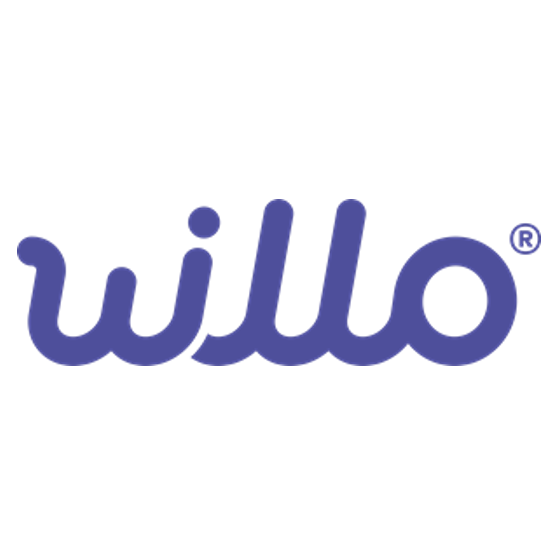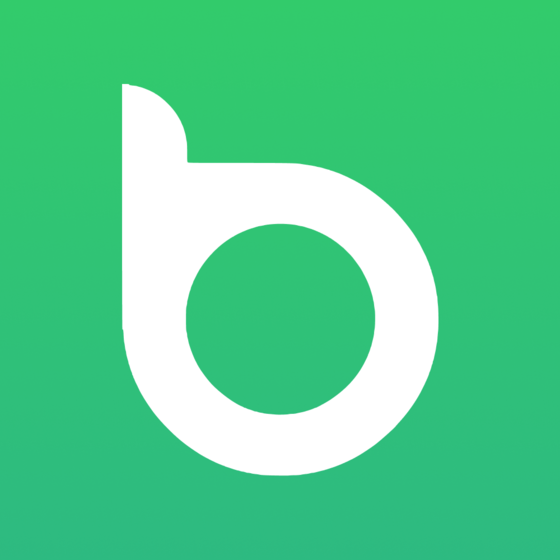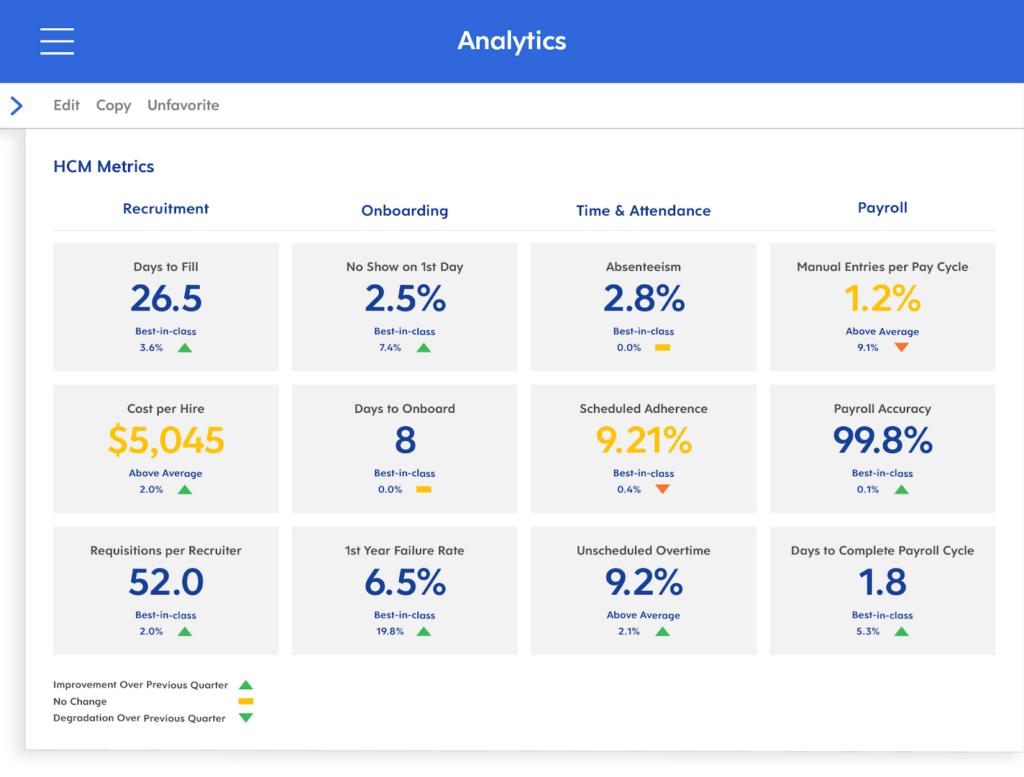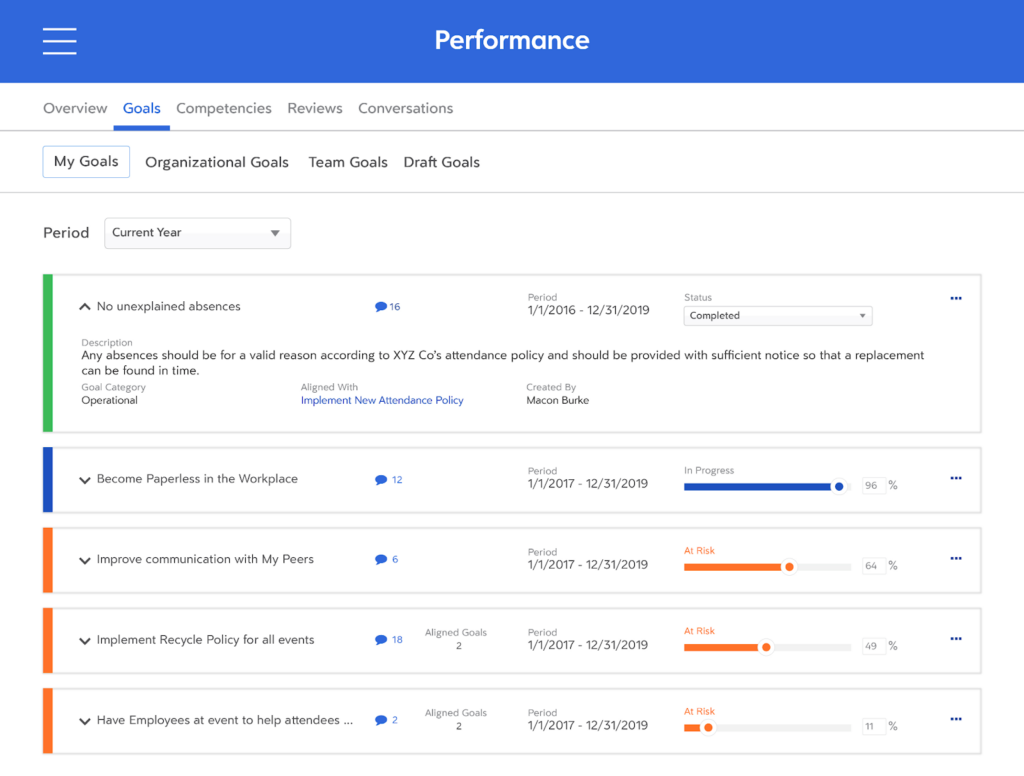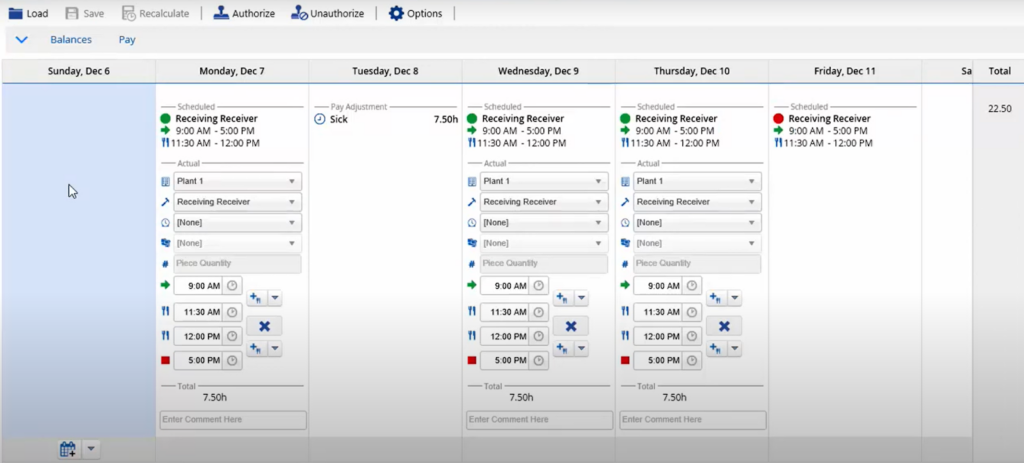-

ChartHop
Visit WebsiteThis is an aggregated rating for this tool including ratings from Crozdesk users and ratings from other sites.4.3 -

Willo
Visit WebsiteThis is an aggregated rating for this tool including ratings from Crozdesk users and ratings from other sites.4.8 -

Boon
Visit WebsiteThis is an aggregated rating for this tool including ratings from Crozdesk users and ratings from other sites.4.7
In this review, I will share my analysis and evaluation of hands-on experience with Dayforce (formerly Ceridian Dayforce). But first, if you're just beginning your search for the best human capital management system, check out my picks of the best HCM systems.
You probably already know that Dayforce is among the most popular HCM systems, but you need to understand what's good and what's not so good about it. This in-depth Dayforce review will walk you through the pros and cons, features, and functionality to help you understand its capabilities and suitability for your situation.
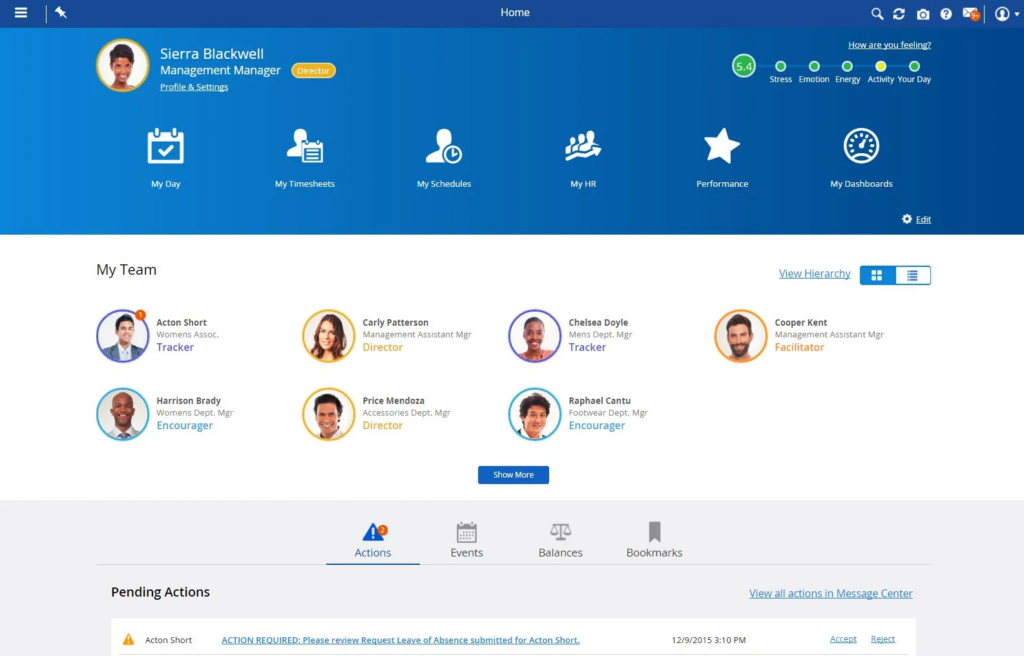
Summary: Dayforce
Dayforce is a cloud-based human capital management (HCM) platform combining HR, payroll, benefits, workforce, and talent management in a single application. HR professionals, payroll administrators, and managers commonly use Dayforce to manage the employee lifecycle from hiring to retirement. It provides businesses with a unified system to reduce administrative burden, ensure compliance, engage employees, and make data-driven decisions.
Dayforce addresses common pain points like disparate systems, manual processes, and lack of real-time data visibility. Its best features are its unified platform, real-time calculations, mobile access, advanced reporting and analytics, and configurable workflows.
Dayforce Pros
- Payroll processing: Dayforce manages payroll calculations, tax filing, and direct deposits, all on the same platform.
- Employee self-service: Employees can access their pay stubs, request time off, update personal information, and more from the mobile app or web portal.
- Workforce management: Dayforce includes scheduling tools, time tracking, and labor forecasting to manage your workforce efficiently.
Dayforce Cons
- Learning curve: Setting up and training employees to use the feature-rich platform effectively can take time.
- Reporting limitations: While it offers pre-built reports, building custom reports is complex and may require technical skills.
- Customer support: Some customers report long response times, and support reps are not always knowledgeable about resolving issues.
Dayforce Expert Opinion
From my perspective, Dayforce is a leading HCM system that provides a set of HR functionalities in a unified platform. Its ability to handle core HR, payroll, benefits, workforce, and talent management in a single application is a key advantage over competitors. The platform's real-time calculation capabilities, providing up-to-the-minute data for payroll and time tracking, is another compelling feature compared to batch-based alternatives.
Although it can be considered an expensive solution, Dayforce's extensive feature set makes it worth the investment for mid-sized to large organizations aiming to consolidate multiple HR systems. While implementation may require some time, Dayforce's excellent compliance record and attentive customer support are reassuring. In my opinion, retail, healthcare, and manufacturing companies with over 100 employees can get the most value from Dayforce’s powerful capabilities.
Why Trust Our Software Reviews
We've been testing and reviewing HCM systems since 2019. As HR experts ourselves, we know how critical and difficult it is to make the right decision when selecting software. We invest in deep research to help our audience make better software purchasing decisions.
We've tested more than 2,000 tools for different HR management use cases and written over 1,000 comprehensive software reviews. Learn how we stay transparent & our software review methodology.
Are You A Good Fit For Dayforce?
Who Would Be a Good Fit for Dayforce?
Dayforce is best for mid-sized to large companies with 100 to 4,000+ employees, especially those in retail, hospitality, manufacturing, and professional services industries. It offers a powerful HCM solution that includes payroll, benefits, workforce management, and talent management features. Companies looking to consolidate HR systems and automate processes across the employee lifecycle would benefit from Dayforce's unified architecture and end-to-end HR capabilities.
Who Would Be a Bad Fit for Dayforce?
Dayforce may not be appropriate for small businesses under 100 employees as its feature set and pricing are geared towards larger organizations. Companies seeking a lightweight, low-cost HR tool for basic employee recordkeeping would find Dayforce too complex. Compared to other solutions, the platform also lacks some advanced talent management functionalities, like learning management. Global enterprises operating in dozens of countries may prefer HCM suites with broader localization.
Best Use Cases for Dayforce
- Retail: Dayforce's labor forecasting, scheduling, and time-tracking features are well-suited for retail environments' dynamic scheduling needs.
- Large enterprises: As a platform that can scale to over 100,000 employees, Dayforce provides the HCM functionality that large, complex organizations need.
- Global companies: Dayforce's global payroll capabilities make it a strong choice for multinational corporations that pay employees in multiple countries.
- HR departments: Dayforce unifies core HR processes like payroll, benefits, and talent management in a single platform, providing efficiency and data consistency for HR professionals.
- Hourly workforces: Features like real-time payroll calculations, mobile punch-in/out, and self-service shift trading meet the needs of hourly workers and their managers.
- Healthcare: Dayforce provides scheduling and compliance features for 24/7 scheduling and credential management requirements of healthcare organizations.
Worst Use Cases for Dayforce
- Small businesses: Dayforce's broad feature set and higher price point may be overkill for small companies with basic HR and payroll needs. They should look for a more straightforward, lower-cost solution.
- Simple payroll: Organizations with basic compensation structures and standard pay rules may not need Dayforce's sophisticated payroll engine. A less expensive payroll-focused system could suffice.
- Custom reporting: While Dayforce has a solid set of built-in reports, it lacks flexibility for companies that need highly customized reporting. Consider other HCM solutions with more adaptable reporting tools.
- Fast implementation: Dayforce's implementation process is lengthy, especially for larger companies. Organizations needing to get up and running quickly should consider other options.
- Occasional users: Dayforce's user interface takes time to learn. It is not for employees and managers who only access the system sporadically. Regular training is also recommended.
- Budget-constrained: As a premium HCM suite, Dayforce's higher cost may not provide ROI for budget-conscious companies. A more affordable, pared-down solution focused on core HR may be preferable.
Need expert help selecting the right Other Software?
If you’re struggling to choose the right software, let us help you. Just share your needs in the form below and you’ll get free access to our dedicated software advisors who match and connect you with the best vendors for your needs.
-

ChartHop
Visit WebsiteThis is an aggregated rating for this tool including ratings from Crozdesk users and ratings from other sites.4.3 -

Willo
Visit WebsiteThis is an aggregated rating for this tool including ratings from Crozdesk users and ratings from other sites.4.8 -

Boon
Visit WebsiteThis is an aggregated rating for this tool including ratings from Crozdesk users and ratings from other sites.4.7
Dayforce Evaluation Summary
- Core Functionality: ⭐⭐⭐⭐
- Standout Features: ⭐⭐⭐⭐
- Ease of Use: ⭐⭐⭐
- Onboarding: ⭐⭐⭐⭐
- Customer Support: ⭐⭐⭐
- Integrations: ⭐⭐⭐⭐
- Customer Reviews: ⭐⭐⭐⭐
- Value for Money: ⭐⭐⭐
Review Methodology
We're a team of software experts who obsess about the features and functionality of different platforms. We know how critical—yet tricky and confusing—software selection can be. We test and score software to find the best solutions, whatever the use case.
Using our objective, data-driven testing methodology, we've tested 300+ software. We dedicate ourselves to being objective in fully and fairly testing software to get beyond the marketing fluff and truly understand the platform.
We've developed strong testing scenarios to use the software like you will. We leverage our first-hand, practical experience with the tools, complemented by interviews with users, experts, and software vendors.
How We Test & Score HCM System
We've spent years building, refining, and improving our software testing and scoring system to evaluate human capital management systems. The rubric is designed to capture the nuances of software selection and what makes human capital management systems effective, focusing on critical aspects of the decision-making process.
Below, you can see precisely how our testing and scoring work across eight criteria. It allows us to evaluate the software unbiasedly based on core functionality, standout features, ease of use, onboarding, customer support, integrations, user reviews, and value for money.
Core Functionality (25% of final scoring)
For HCMt systems, the core functionality we test and evaluate are:
- Recruiting: Integrates the hiring process from job posting to applicant tracking.
- Onboarding: Efficiently bring new hires up to speed with training and orientation.
- Performance management: Set goals, conduct reviews, and manage employee performance.
- Benefits administration: Manage employee benefits plans and enrollments.
- Time & attendance: Track employee work hours, time off, and scheduling.
- Payroll: Process employee compensation and manage tax withholdings.
Standout Features (20% of final scoring)
We evaluate uncommon, standout features that go above and beyond the core functionality defined and typically found in human capital management systems. A high score reflects specialized or unique features that make the product faster, more efficient, or offer additional value to the user.
Ease of Use (15% of final scoring)
We consider how quick and easy it is to execute the tasks defined in the core functionality using the human capital management system. High-scoring software is well-designed and intuitive to use, offers mobile apps, provides templates, and makes relatively complex tasks seem simple.
Onboarding (10% of final scoring)
We know how important rapid team adoption is for a new platform, so we evaluate how easy it is to learn and use the human capital management system with minimal training. We also evaluate how quickly a team member can get set up and start using the software with no experience. High-scoring software indicates little or no support is required.
Customer Support (10% of final scoring)
We review how quick and easy it is to get unstuck and find help by phone, live chat, or knowledge base. HCM systems that provide real-time support score best, while chatbots score worst.
Integrations (10% of final scoring)
We evaluate how easy it is to integrate with other tools typically found in the tech stack to expand the functionality and utility of the software. Human capital management systems offer many integrations, third party connections, and API access to build custom integrations that score best.
Customer Reviews (10% of final scoring)
Beyond our testing and evaluation, we consider the net promoter score from current and past customers. We review their likelihood of choosing the human capital management system again for the core functionality, given the option. High-scoring software reflects a high net promoter score from current or past customers.
Value for Money (10% of final scoring)
Lastly, considering all the other criteria, we review the average price of entry-level plans against the core features and consider the value of the other evaluation criteria. Software that delivers more for less will score higher.
Through this comprehensive approach, focusing on core functionalities, standout key features, usability, onboarding, customer support, value, and user reviews, I aim to identify HCM systems that meet and exceed expectations, ensuring teams have the tools they need to succeed.
Dayforce Review
Core HCM System Functionality
Payroll processing: Dayforce handles the entire end-to-end payroll process, including calculating pay, withholding taxes, and issuing direct deposits or checks. The payroll module is tightly integrated with time and attendance.

Time and attendance tracking: Employees can punch in and out, request time off, and view schedules through web and mobile interfaces. Managers can see real-time data on who is clocked in and easily manage PTO requests.
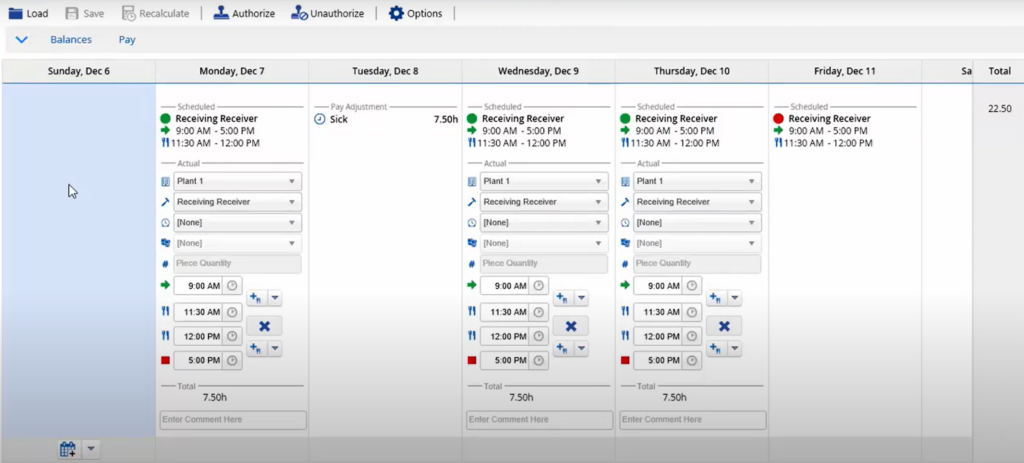
Benefits administration: The system provides decision support tools to help employees pick the right plans, managing employee benefits administration

Talent management: Dayforce offers features for recruitment, onboarding, performance management, succession planning, and compensation management. All employee data is unified in a single record.
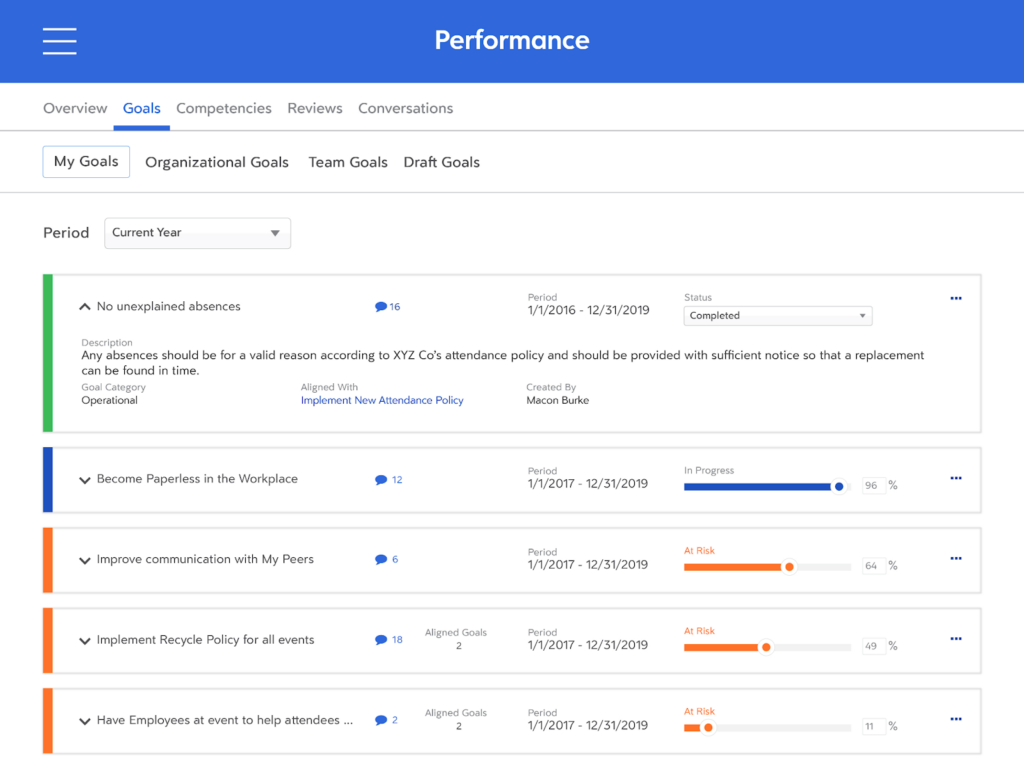
Workforce management: Labor forecasting, scheduling, and budgeting tools allow managers to optimize staffing while controlling costs. Real-time visibility helps proactively manage overtime and compliance.

Reporting and analytics: An extensive library of standard reports covers all HCM functions and can be customized. Data can be sliced and diced for insights, and dashboard views show KPIs.
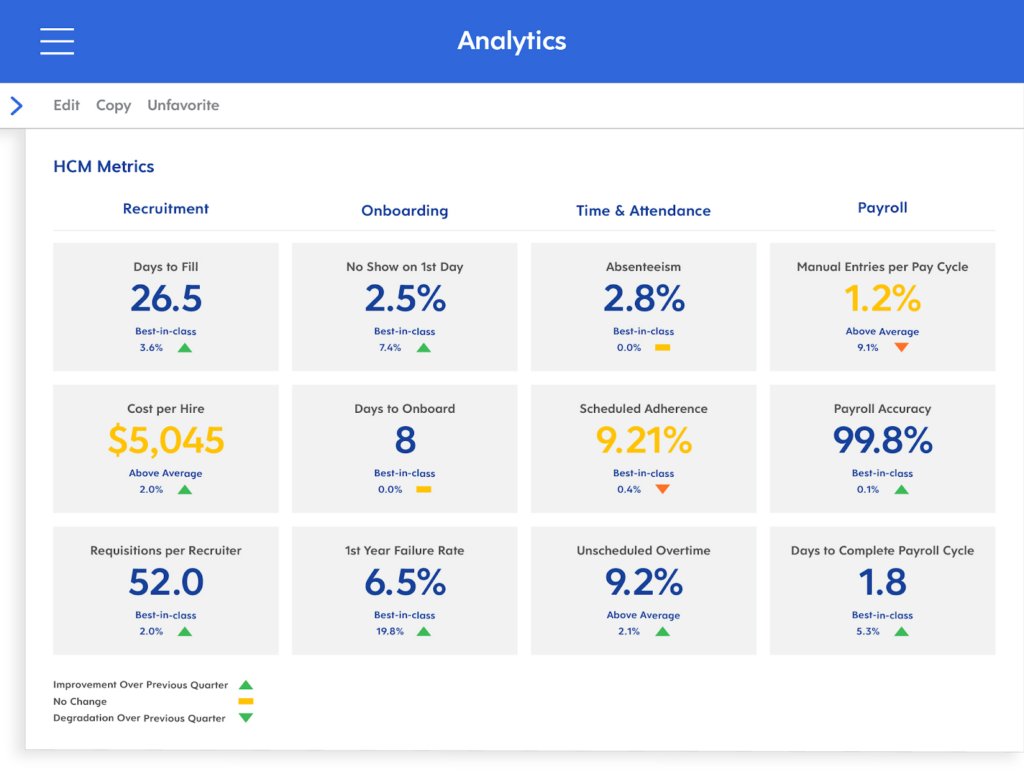
Dayforce Standout Features
Dayforce Wallet: This on-demand pay feature allows employees to access earned wages anytime rather than waiting for a scheduled payday. It can help reduce financial stress without any cost to the employer.
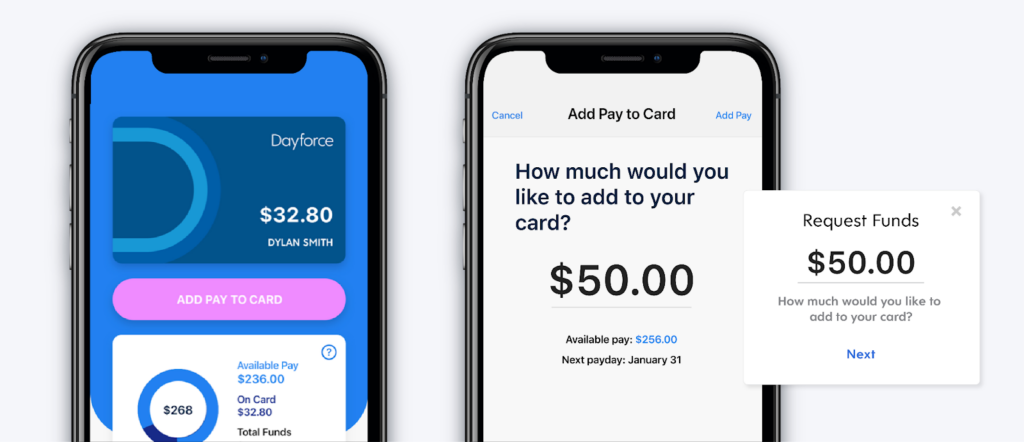
Succession planning visualization: Dayforce includes an interactive org chart that shows key positions, who is ready now vs. ready in the future, and how roles are related. This gives a clear picture of succession plans and gaps.
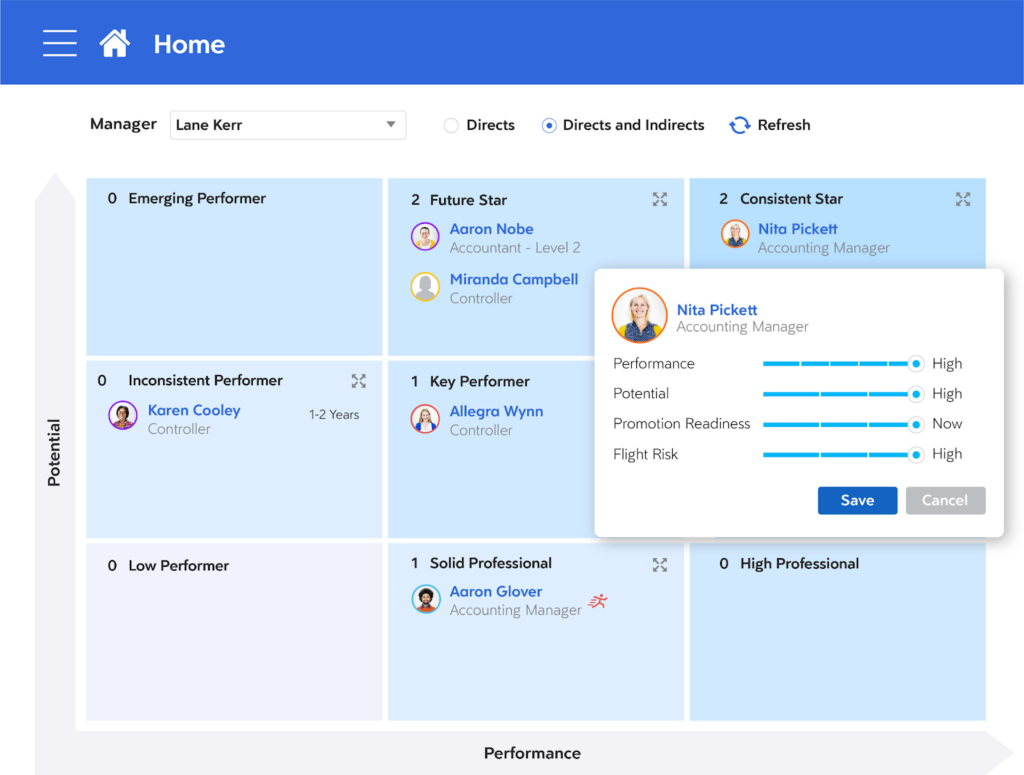
Ease of Use
Compared to many other HCM systems I've used, Dayforce is fairly intuitive and user-friendly overall. The unified platform means less back and forth between modules. However, its functionalities make it more complex than basic human resource tools. Some training is required to master administrator tasks like building schedules or configuring new hire workflows.
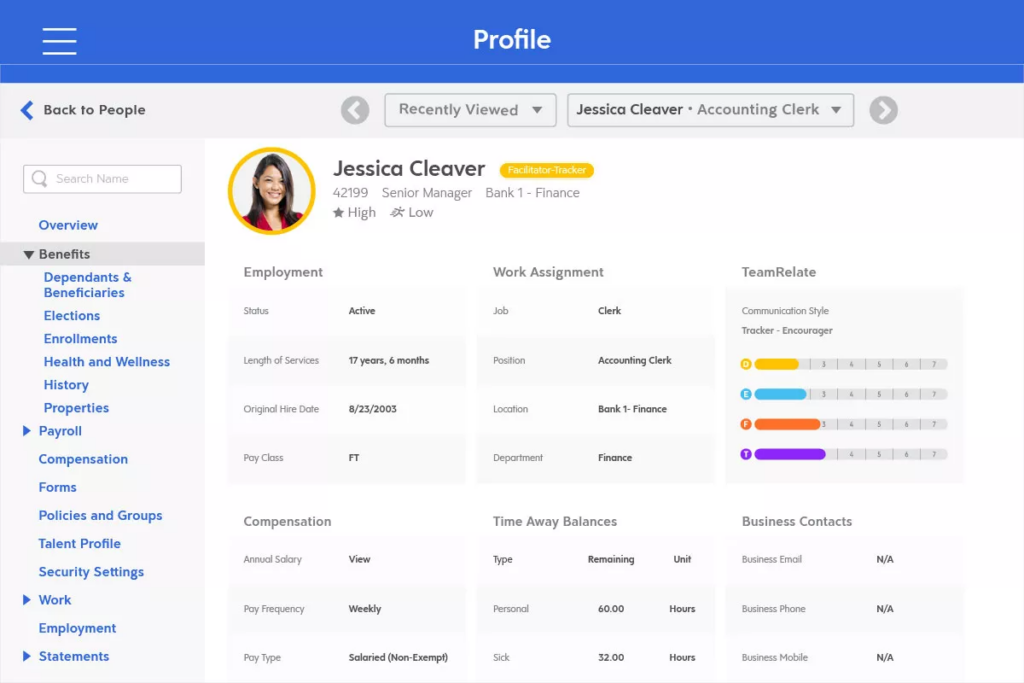
Onboarding
New Dayforce customers are assigned a dedicated implementation team that provides initial configuration and training for several months. The team teaches the customer to use the system independently at go-live. Compared to other HCM implementations I've been involved in, Dayforce onboarding is thorough but requires a significant time investment from the customer side to make decisions and learn the system.

Customer Support
Dayforce customers can access support by submitting a case through the support portal. Here, customers can chat live with a support representative or call the 24/7 customer support phone line. There is also an online knowledge base with articles and how-to guides.
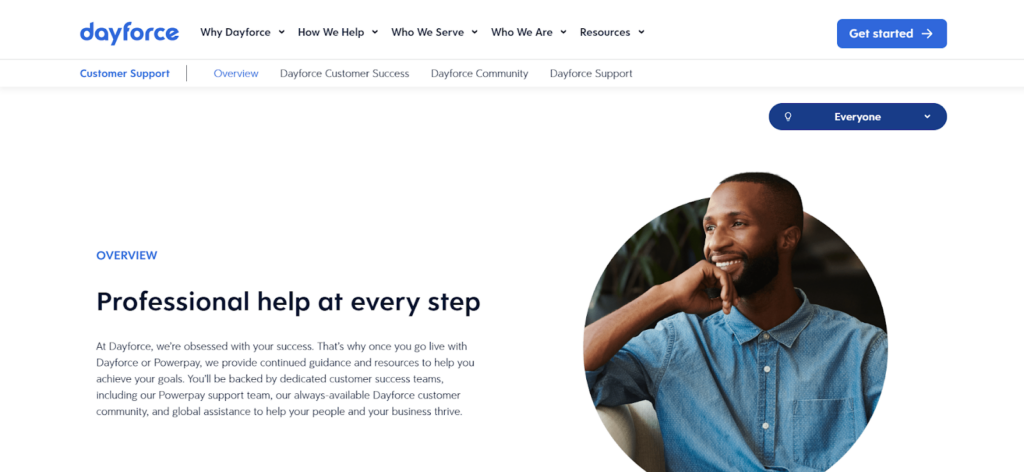
Integrations
Dayforce integrates natively with Reference Services, Vocantas, Microsoft, Oracle Netsuite, SAP, Salary.com, and others.
The Dayforce Software Partner Program certifies third-party software integrations in the partner marketplace. Customers can also build their integrations using the Dayforce API and web services.
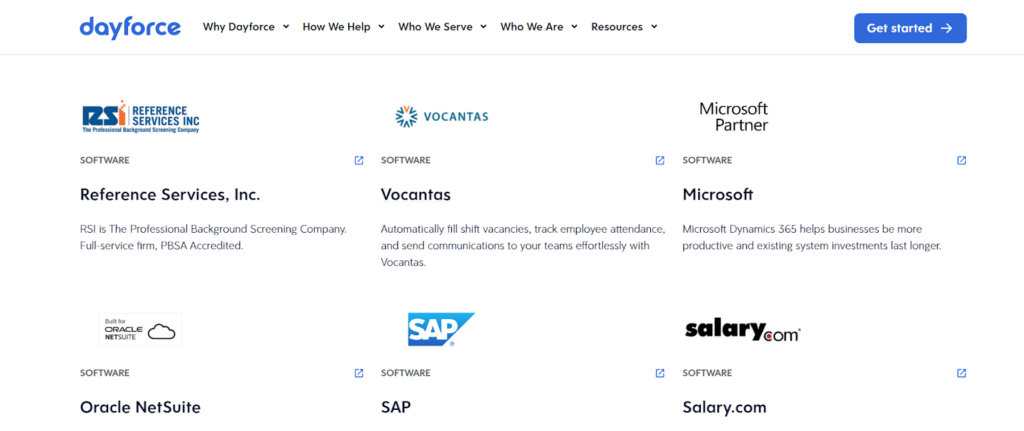
Value For Money
Dayforce is an expensive, premium-priced HCM solution. Dayforce pricing is not listed publically, and the sales team must be contacted for a custom quote based on the company’s needs.
From my research, Dayforce subscriptions typically include:
- Core HR management
- Payroll processing
- Benefits administration
- Timesheet and attendance tracking
- Talent acquisition and management modules
While Dayforce delivers a lot of value with extensive features and HR process automation, its price might be hard to justify for small and mid-sized businesses with more straightforward needs and tighter budgets. Companies with simpler needs and tighter budgets may benefit from other HCM solutions.
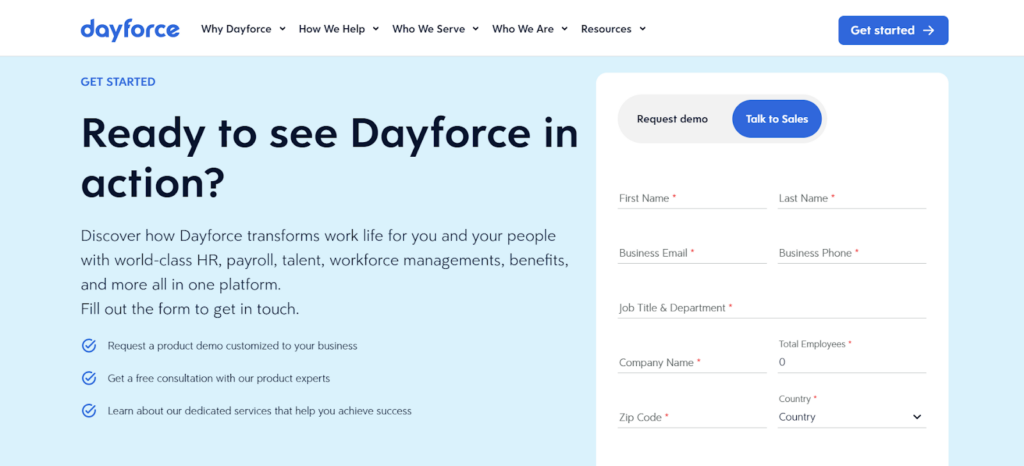
Product Specifications
| Feature | Dayforce |
| Employee profiles and records | ✅ |
| Organizational structure management | ✅ |
| Payroll processing | ✅ |
| Direct deposit | ✅ |
| Tax filing & compliance | ✅ |
| Benefits administration | ✅ |
| Time & attendance tracking | ✅ |
| Scheduling | ✅ |
| Leave management | ✅ |
| Performance reviews | ✅ |
| Succession planning | ✅ |
| Applicant tracking system | ✅ |
| Onboarding | ✅ |
| Learning management system | ✅ |
| Compensation management | ✅ |
| Advanced workforce analytics | ✅ |
| Real-time reporting | ✅ |
| Mobile app | ✅ |
| Employee self-service | ✅ |
| Manager self-service | ✅ |
| Integrated payroll & HR | ✅ |
| Social collaboration tools | ❌ |
| Goal management | ❌ |
| Customizable dashboards | ❌ |
| Job Costing | ❌ |
Dayforce Alternatives
If you're looking for alternative HCM system options to Dayforce, here are a few worth checking out:
- Workday HCM: Workday HCM provides a unified platform that includes HR, payroll, talent management, and analytics.
- ADP Workforce Now: ADP Workforce Now offers HR tools, including payroll, time tracking, benefits administration, and compliance management.
- UKG Pro (Ultimate Kronos Group): UKG Pro focuses on providing AI-powered workforce management and HR service delivery solutions.
- SAP SuccessFactors: SAP SuccessFactors delivers a full suite of talent management capabilities, HR analytics, and workforce planning.
Dayforce Frequently Asked Questions
What is Dayforce?
Dayforce is a cloud-based human capital management platform combining HR, payroll, benefits, workforce, and talent management into one application. It provides real-time data and insights across all aspects of HCM to help organizations make better people decisions. Dayforce serves customers of all sizes and industries in more than 50 counties.
Is there a mobile app for Dayforce?
Yes, Dayforce offers a mobile app for iOS and Android devices. The app allows employees to access their pay, benefits, schedules, time-off requests, and balances. Managers can view team schedules, approve time-off requests, and perform other tasks. The app uses the same single database as the full web application to provide a consistent user experience.
Is Dayforce HIPAA compliant?
Yes, Dayforce is HIPAA-compliant. It adheres to HIPAA regulations for data privacy and security in its software, infrastructure, and internal processes and procedures. Dayforce signs Business Associate Agreements with covered entities as required by HIPAA.
Is Dayforce SOC 2 compliant?
Yes, Dayforce has achieved SOC 1 and SOC 2 compliance. This means it has passed independent audits of its internal controls relevant to security, availability, processing integrity, confidentiality, and privacy. The SOC reports assure customers that Dayforce maintains a secure environment.
Is Dayforce secure?
Yes, security is a top priority for Dayforce. Key security measures include:
- Encryption of data in transit
- Access controls
- Multi-factor authentication
- Regular security audits
- Incident response
These measures help ensure that sensitive information remains protected.
Is Dayforce FedRAMP certified?
No, Dayforce is not FedRAMP certified. While it meets various compliance standards, it does not hold the Federal Risk and Authorization Management Program (FedRAMP) certification. Organizations requiring FedRAMP certification may need to consider other options.
Is Dayforce GDPR compliant?
Yes, Dayforce is GDPR-compliant. The platform adheres to the General Data Protection Regulation requirements, ensuring the protection and privacy of personal data for individuals within the European Union, including data subject rights and data breach notification processes.
Is Dayforce easy to use?
Yes, Dayforce is designed to be user-friendly. It features an intuitive interface that simplifies HR tasks for administrators and employees. Training and support resources are also available to help users navigate the platform effectively.
Dayforce Company Overview & History
Dayforce is a global human capital management (HCM) software company. Its flagship product is Dayforce, a cloud HCM platform that streamlines human resources, payroll systems, benefits, workforce management, and talent management in a single application.
Dayforce is headquartered in Toronto, Canada, and Minneapolis, Minnesota, with over 5,000 employees worldwide.
In 2021, Dayforce reported annual revenue of $1.02 billion, a 25.2% increase year over year. As of April 2022, it had a market capitalization of approximately $10 billion. Dayforce's stock trades on the New York Stock Exchange and Toronto Stock Exchange under the ticker symbol "CDAY."
The company is known for its people-focused culture centered around diversity and professional growth. Dayforce also invests in employee learning and development programs
Want to learn more about Dayforce? Check out their site for additional information.
From $6/user/month (billed annually)
Free demo available
Dayforce Major Milestones
- 1992: Ceridian, the parent company of Dayforce, was founded.
- 2012: Ceridian acquired Dayforce and launched the Dayforce HCM platform.
- 2018: Completed initial public offering; listed on NYSE and TSX.
- 2019: Acquired Australian workforce management company RITEQ.
- 2021: Exceeded $1 billion in annual revenue.
What’s Next?
To remain up to date on all the latest in people management, subscribe to our newsletter for leaders and managers.


